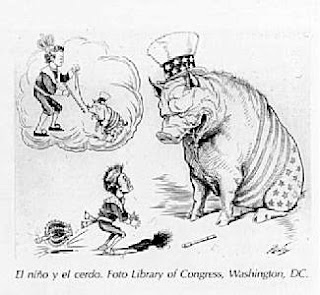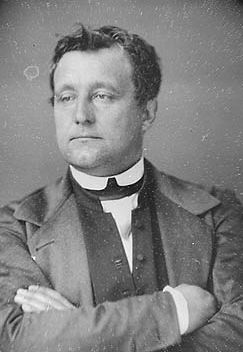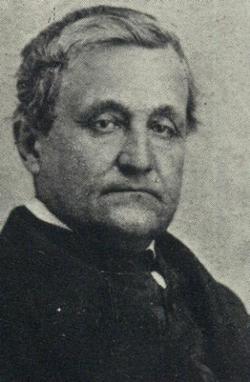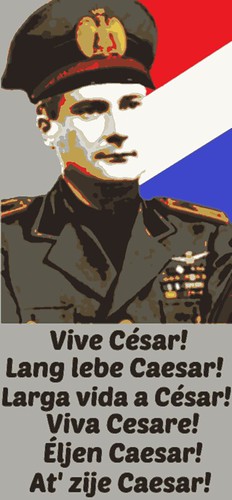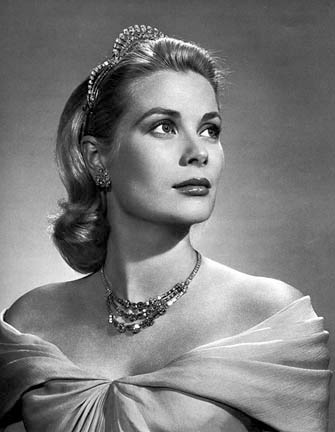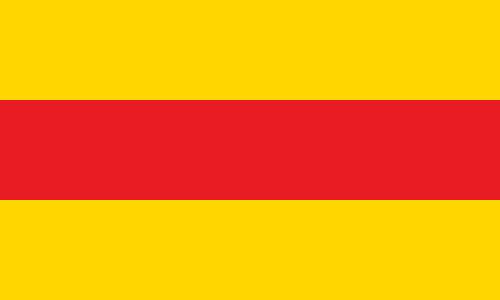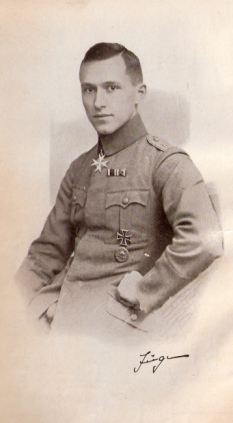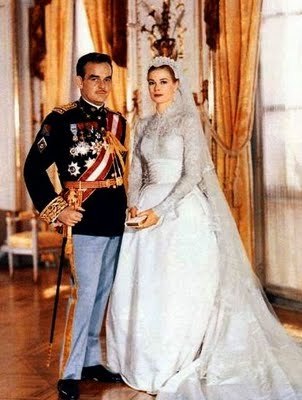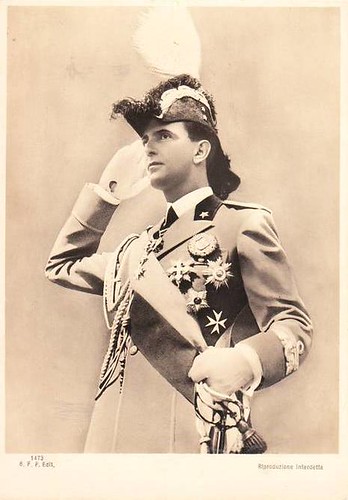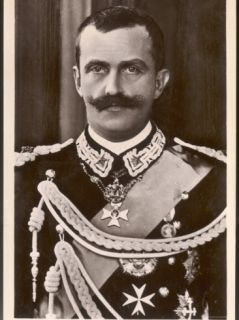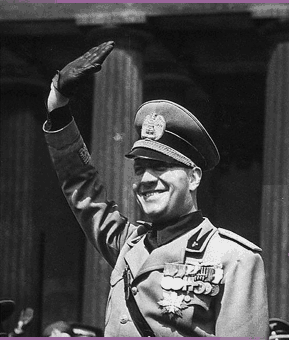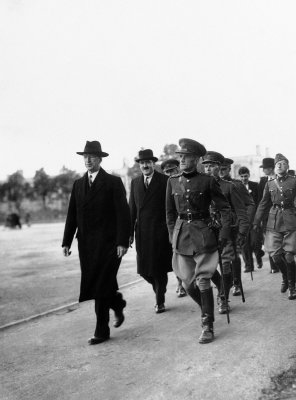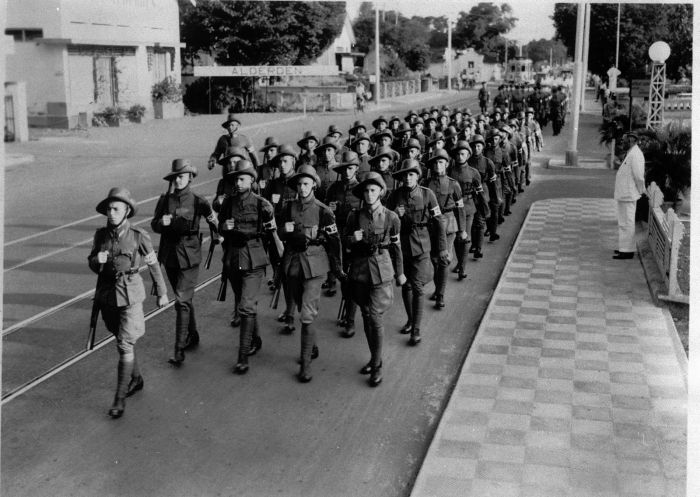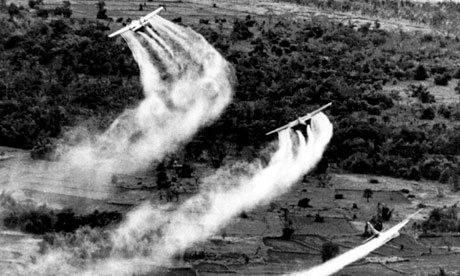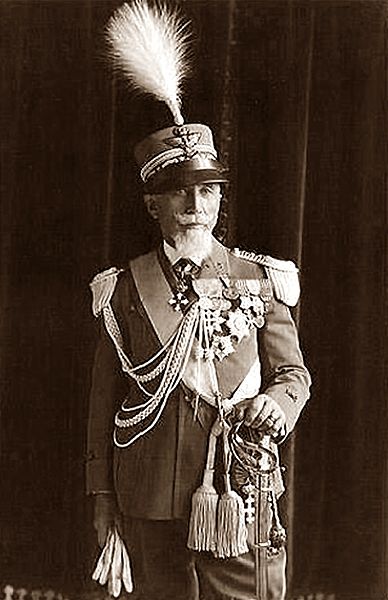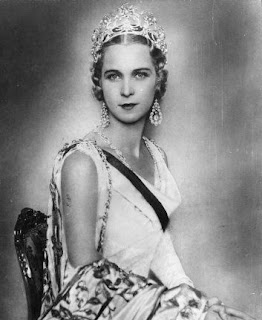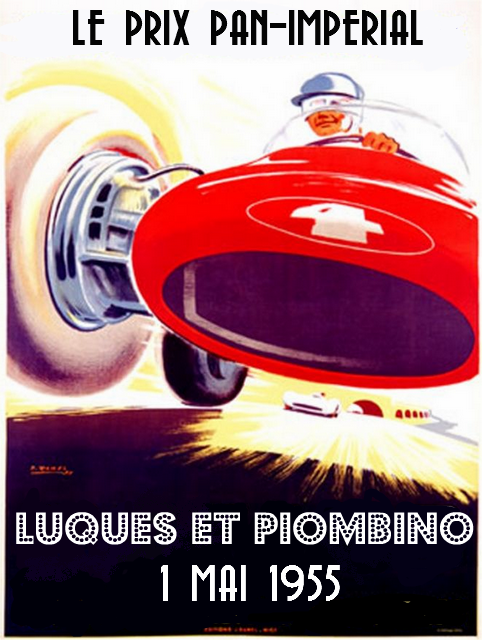This chapter's all finished now! Enjoy and give me some comments. Especially let me know if you spot a mistake. The next chapter will have an appearance by the unofficial mascot of AH.com, good ol' Tricky Dick himself. 
THE COLD WAR BEGINS
THE CATHOLIC BLOC: "THE LEAGUE OF THE THREE EMPERORS"
Caesar Napoleon VI (center, left), his officer corps, and several minor nobles (such as Austrian general Baron Adolf von Branau) leaving a parade at the Victory Tower, 1950
By 1950, everyone saw a conflict on the horizon. It was obvious that Steele wanted to go to war before he got too old, the Southron nations badly wanted to put down their long-standing northern enemy, and Prussia was growing restless and tired of the status quo, so Napoleon VI launched a program of preparedness for any event. He built up border fortifications, built massive, sprawling bunker complexes, and pressed for further advancements in military technology, including examining the possibilities of "harnessing the atom" for military usage. The Cold War had begun.
THE TRIPARTITE EMPIRE:
The Bonaparte family's stranglehold on Europe was ancient by 1950. Quite simply, no one was alive to remember the days when France and its successor, the Tripartite Empire, was the newest kid on the European block, continually getting the snot beaten out of it by everyone in sight until the original Corsican Ogre managed to get Austria to join in on his pounding of Britain. The last veteran of the Wars of Napoleon I, Polish corporal Casimir Polanski who served in the French Army from 1815 onward, died at age 115 in 1910. Nowadays, the Empire was a European establishment, and the days of the Revolution and the Great Wars of the Empire were well and truly over.
When Napoleon IV took the throne in 1903 following his father's heart attack, he let it be known that he was fairly progressive, but not some sort of liberal. Whereas Napoleon III had been lax and (some said) spineless, Napoleon IV immediately tried to undo the cultural and political changes made by his father, and he proved he wasn't playing games when he participated in the Missionary War. He welcomed technological innovation while maintaining a strong militaristic state and flexing his authority, making sure no one questioned the Empire's might. When he died of pneumonia at age 71 in 1930, his 53 year-old son Napoleon V took the throne. The funeral ceremony was huge, and Napoleon V made sure his father had the "most elaborate funeral in history since Napoleon I." Almost every head of state in the civilized world showed up to pay their respects, from the Egyptian Royal Family, to Arabian sheiks, to Far East Asian petty kings. The funeral was one of the very few times Napoleon V wore a uniform, the others being other leaders' funerals and his own wedding.
Napoleon IV lying in state at La Crypte Impériale in Paris, 1930. Bonapartes formed the group of pallbearers on the left side, while Hapsburgs formed the group on the right. The soldiers and officials on either sides of the room were various generals, counts, and officers from the extended Imperial Bloc.
The uniform issue was evidence of what was to come. Historians consider Napoleon V to be "one of the most indifferent leaders of the 20th century." Virginia-born historian Nelson Harvey said in his 1960
History of the Imperial Family that, "Napoleon V was a biologist at heart. He was obsessed with science and cared little for matters of state, or really anything to do with being lord and master of Europe. A suit and tie suited him far better than a chest full of medals and a bicorne." Napoleon V was rarely seen in public during his reign, and he usually stayed inside with his family or debated issues with scientists; he was rarely even photographed. One of the few moments of his using his power for personal reasons, though, was when he met an "evolutionist" at one of his lectures. The theory of evolution, that man had evolved from apes or "some such nonsense," deeply offended the pious Catholic emperor, and he worked to silence all such proponents of the idea. At the time, almost all evolutionists were Imperial citizens. The result of the crackdown was that the evolutionary theory was virtually dead by 1950.
Joe Steele had come to power in the Republican Union just a year before Napoleon V's coronation, and Steele recognized Napoleon V's weakness instantly and eagerly, famously calling him "a wimpy sucker." In almost all matters, Napoleon V was scared to death what Steele might do in reaction, such as during the Reservation Rebellions, when Steele's closure of the Panama Canal to Imperial troops almost ended with Imperial defeat in the Reservation Rebellions, and Steele had done it solely to put his thumb into Caesar's eye and antagonize him. Other leaders simply refused to take him seriously after that affair. The Empire hadn't seen such weakness since the morbidly obese Napoleon III gave Cornwall back to England, which proved to be a horrible decision when England went fascist under Churchill thirty years later. The rest of Napoleon V's reign flew by in a dull, weak blur until he died at age 73 in 1950.
Cartoon showing Napoleon IV taming the American Swine in the past while Napoleon V is forced to bow down to it in the present
Napoleon V shortly before becoming Caesar, 1928
Photo of Caesar Napoleon V printed in a 1948 French newspaper
Now came a time of change. 1950 was an explosive year, with multiple key world leaders dying or stepping down, from the King of Sweden to the leader of the Carolinas. The Empire needed a strong hand to guide them through a time of world economic and political uncertainty, and they got just that in the young, handsome, charismatic Napoleon VI.
Caesar Napoleon VI speaks before the Imperial Army for the first official time
Poster celebrating the coronation of Napoleon VI in the six official languages of the Empire (French, German, Spanish, Italian, Hungarian, and Czech Bohemian)
Napoleon VI was 35 when he took the throne in 1950, and he immediately set out to reverse "thirty years of stagnation." He cracked down on the Reservation Lands, sending a wave of Austrian landship corps and crack European infantry in. He restarted the universal draft that had been shut down following the death of Napoleon II, meaning all male European citizens of the Empire over age 20 had to serve a mandatory year in the armed forces. He opened up the shipyards again, building a new fleet of submarines. He began numerous public works programs to give work to the unemployed, like the construction of the massive Victory Tower, commemorating the Bonapartist victories of the previous century. And this was all just in his first year as leader.
Another thing that rose Napoleon VI's popularity was his Italian wife, Caesarina Silvia, and their only child, Princess Napoleona, who was 15 in 1950. It was certainly a change of pace to have a female heir to the throne. There was still a chance that more children would be born, including a son which would replace Napoleona as heir, but it was known that Silvia suffered from multiple health problems. Napoleon and Silvia seemed content to just have Napoleona, and the nation adored her. It was a popular parlor game across Europe to try to guess who the future empress would marry, and the press constantly hounded her; a simple photo of her at a ball with a young army officer could cause newspaper buzz for weeks.
Princess Napoleona (circa 1953)
BADEN:
Though originally a part of the Confederation of the Rhine, by the end of the Napoleonic Wars, Baden had been the favored micronation of the Bonapartes, due to Napoleon I's stepdaughter marrying the Grand Duke. Over the century and a half that had passed since, Baden was allowed to maintain its own affairs and the Empire treated it as an important nation worthy of respect. In 1931, Baden troops had been among the first to participate in the Reservation Rebellion. From 1936 to 1942, Baden troops fought in several small wars in Africa. By 1950, Baden had proved its loyalty indisputably, and Caesar elevated the Grand Duchy to a Kingdom. Young King Karl I (formerly Grand Duke Karl III) was quite pleased with these events.
King Karl I of Baden
CONFEDERATION OF THE RHINE:
Kaiser Karl I (Charles von Bonaparte-Hapsburg) of the Rheinbund
The predominantly Catholic Rheinbund was at the center of the "Cold War" breaking out between the Tripartite Empire and the Prussian Empire in the early 1950s. While Kaiser Karl I, the son of Franz Joseph I, Napoleon II's adopted Hapsburg son, was on friendly terms with the Prussian Kaiser Eitel Wilhelm I and Crown Prince Helmut Wilhelm, their countries were rivals. Despite often using Karl I as an ambassador to Berlin, Napoleon VI could not help the increasing and ancient tensions between the Bonaparte-Hapsburgs and the Hohenzollern-Wettins from getting worse. When war would finally come, Karl I didn't want to be caught with his trousers down. In early 1951, a massive line of trenches, bunkers, tunnels, and weapons installations were constructed along the Prusso-Rheinbund border. In Frankfurt, the capital of the Rheinbund, he began constructing artillery forts surrounding the city, as well as dozens of redoubts and trenchlines in the surrounding suburbs and countryside.
Karl I was 63 and in poor health in 1950, and his oldest son, Karl II, was there to take over in case he died. His younger son, Prince Franz, actually became heavily involved with Princess Napoleona starting in 1952. Franz and Napoleona were technically cousins, and both were Catholic, so the couple was looked upon with approval and for possibly eliminating the possibility of Napoleona marrying Sergei Romanov, son of the 76 year-old Prime Minister Catherine Romanov of the Russian Republic. Sergei was utterly loathed by the Bonaparte family and many said he was the bastard son of Catherine and one of her generals, and thereby not eligible for to hold a the title of consort in the Empire. In 1953, Franz and Napoleona made it official and announced they would be getting married. On April 2nd, 1953, they were married at Notre Dame Cathedral amidst a spectacle of pomp and circumstance. Their popularity helped cool the Cold War down, but only a little.
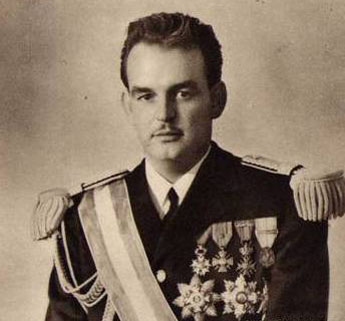
Franz von Bonaparte-Hapsburg, future Caesar Consort of the Tripartite Empire
Rare color photograph of Franz and Napoleona directly after their wedding
THE ITALIAN KINGDOMS:
When Carlo I of the Two Sicilies died in 1939, his only child, Julius, had died already, as had all of Carlo's siblings and immediate family, leaving him without heir. Several months followed with no Sicilian leader as the Bonaparte family tried to piece together what should happen next. Finally, after nation-wide votes, the Kingdom of Italy, under Hapsburg descendent Massimiliano III, and the Kingdom of the Two Sicilies agreed to merge into one Italian state, the Empire of the Two Italies, in a system where Massimiliano held the mostly-ceremonial titles of "King of Italy" and "King of the Two Sicilies," while legally being "Emperor of All the Italians." The transition was smooth and peaceful, and the two nations quickly adapted. This made Massimiliano the fourth man in Europe to hold the title of emperor.
Emperor Massimiliano III
Massimiliano III died in 1950 at age 71 from chronic respiratory infection and a series of strokes. His 45 year-old son became Emperor as Massimiliano IV, and continued most of his father's policies while also reviving the universal draft. The Italian economy went up and up following his coronation, and by 1952, it was one of the fastest-growing ones in Europe.
Emperor Massimiliano IV
KINGDOM OF IRELAND:
King Dominic III, circa 1950
Ireland in the 1940s and the first half of the 1950s was a volatile place. Just across a thin strip of water was fascist Scotland and England, brimming with hatred for all Catholic Irishmen. The Irish king, Dominic III, the great-great-great-grandson of Joseph Bonaparte, was extremely "obnoxious and obtuse," according to his cousin Napoleon VI, but they were good friends and often were seen together at parades and political events. Dominic was extremely aggressive and strong-arming in diplomacy, and he was partly to blame for the increasing world tensions. In 1951, he conducted massive military exercises and artillery tests that almost made Scotland think they were under attack. Until several phone calls between the governments put Scotland's fears to rest, for several long hours the world was on the brink of total war.
Dominic III (suit, far left) and his officer staff inspect defenses during the ill-fated 1951 military exercises
In 1952, following the military exercise fiasco, French and Spanish troops landed in Ireland and took up positions on permanent bases along the coast opposite of Scotland. After that, Napoleon VI pretty much took over all international relations for his bumbling Irish cousin.
KINGDOM OF HOLLAND:
The Dutch Army on parade, Amsterdam, 1951
The Kingdom of Holland was still under Queen Louise Napoleona I in 1950, and she was still angering her family with her protestantism. By the 1950s, she had solidified her control over Southeast Asia, and had begun building up in her section of Australia. There were troubles brewing in China, however, where the locals were tiring of the 50 year occupation. Armed revolts had broken out in several provinces, and in June of 1951, Dutch troops (including Indonesians for the first time) were sent in to combat the rebels. An endless guerrilla war stretched on for years as local warlords and petty rulers sided with or against the Dutch colonials. In January, 1952, following the beheadings of twenty Dutch soldiers by Chinese rebels, Louise Napoleona ordered several battalions to torch and destroy several villages. Dutch troops mercilessly shot and hacked to death with kukris over 400 Chinese civilians. The rebels responded by blowing up the colonial governor's mansion in Indochina. The Dutch, in turn, responded with airship barrages of entire valleys, destroying whole towns in minutes and killing an estimated 10,000 people. By 1953, over 300,000 Dutch, Australian, and Indonesian troops were occupying Southern China, and the brutal atrocities committed by them were played down in Europe. The brutality only seemed to make the Chinese more determined, however, and so the Sino-Dutch War stretched on.
Dutch troops lob mortars down onto Chinese positions, circa late 1952
Dutch planes spray "Royal Orange" poison gas over a village in Southern China, 1953
Back in Europe, Louise Napoleona was considered a wild card, with many doubting her loyalty to her Catholic cousin in Paris and questioning her increasingly pro-Prussian outlook and barbaric actions in China. Finally, though, in 1954 she signed an alliance promising to come to the Tripartite Empire's side if war broke out. Her lucrative oil supplies were especially key, as the Middle East was fairly unreliable and unstable and Russia, the largest oil exporter in the entire world, was a possible future enemy.
Queen Louise Napoleona I
Louise Napoleona I's consort was William, a half-Prussian, half-Danish noble. Of their nine children, the oldest male, William Napoleon I, was the crown prince. 34 in 1950, William Napoleon was fairly popular, and he seemed more pro-Catholic than his mother, and rumors said secretly he
was a Catholic. His chances for becoming king were crushed, though, in 1953, when he died in a tragic car accident that killed him, his wife, his young daughter, and their driver. All of Europe showed its respects and most all the leaders of the world were present for the family funeral. After that, the position of crown prince passed to William Napoleon's younger brother, Louis Napoleon III. His views were largely unknown, and he was rather quiet and distant, never giving Caesar a chance to see where his true loyalties lied.
KINGDOM OF QUEBEC:
King Pierre I of Quebec
Quebec was very, very worried about the possible outbreak of hostilities. The Quebec-Republican Union border was one of the tightest in the world, and was considered the start of the "Papist Curtain," as the Union called it. In the 1940s, the Tripartite Empire invested heavily in fortifying the border with anti-airship defenses and land mines. The Bonapartist King, Pierre I, who had taken power in 1940 upon the death of his mother (Caesar Napoleon IV's daughter) Queen Marie I, was absolutely terrified of Joseph Steele, and in 1950, he installed a bunker beneath the palace in Quebec City. Pierre was married to a Portuguese noblewoman and they had six children, all girls, with the oldest, the 31 year-old Princess Marie, being heiress to the throne.
Princess Marie of Quebec (Official Portrait, 1948)
Quebec was legally an independent nation, but in practice it was nothing more than a Bonaparte-run Imperial satellite. Quebec was largely in charge of Imperial Canadian Territories, though, so it was a key nation to keeping the mammoth-sized Tripartite Empire functioning smoothly. The military draft had never stopped in Quebec, and the nation had entire books of instructions on what to do in case of Union invasion.
King Pierre I meets with the visiting Italian Emperor Massimiliano III in Quebec City (1945)
In 1953, Quebec signed an treaty making it an unofficial member of the Columbian Alliance. While it continued to use Imperial currency and manage its own affairs, it agreed to come to the aid of the Southron nations if they were attacked, and especially vice-versa. Quebec was thankful to have good allies in North America instead of relying on support coming all the way from Europe.
- Napoleon VI (born 1915) Caesar of the Tripartite Empire, Emperor of the United Empire of Brazil and Rio de la Plata, Lord of Mann, Mediator of the Helvetic Confederation, Protector of the Confederation of the Rhine, and Protector of the Free City of Lisbon.
- Napoleona (born 1935) Princess Imperial of the Tripartite Empire, Princess Imperial of the United Empire of Brazil and Rio de la Plata, Princess of Bohemia, Duchess of Reichstadt, Princess of Bombay
- Charles I (Karl I) (born 1887) Emperor/Kaiser of the Confederation of the Rhine
- Massimiliano III (born 1879 died 1950) King of Italy, Count of Vienna
- Massimiliano IV (born 1905) Emperor of Italy, Count of Vienna, King of Italy, King of the Two Sicilies
- Carlo I (born 1847 died 1939) Last King of the Two Sicilies
- Charles Louis II (born 1865) King of Andorra
- Dominic IV (born 1890) King of Ireland
- Marie I (born 1858 died 1940) Queen of Quebec
- Pierre I (born 1888) King of Quebec
- Louise Napoleona I (born 1894) Queen of Holland
- Adriana I (born 1849 died 1949) Princess of Lucca and Piombino
- Antonio I (born 1874 died 1950) Prince of Lucca and Piombino
- Antonio II (born 1907) Prince of Lucca and Piombino
 For those who don't know its a meme/webcomic where countries are represented as balls and a variety of different things are played out from there (spoofing international relations, history etc.). Enjoy.
For those who don't know its a meme/webcomic where countries are represented as balls and a variety of different things are played out from there (spoofing international relations, history etc.). Enjoy. 



